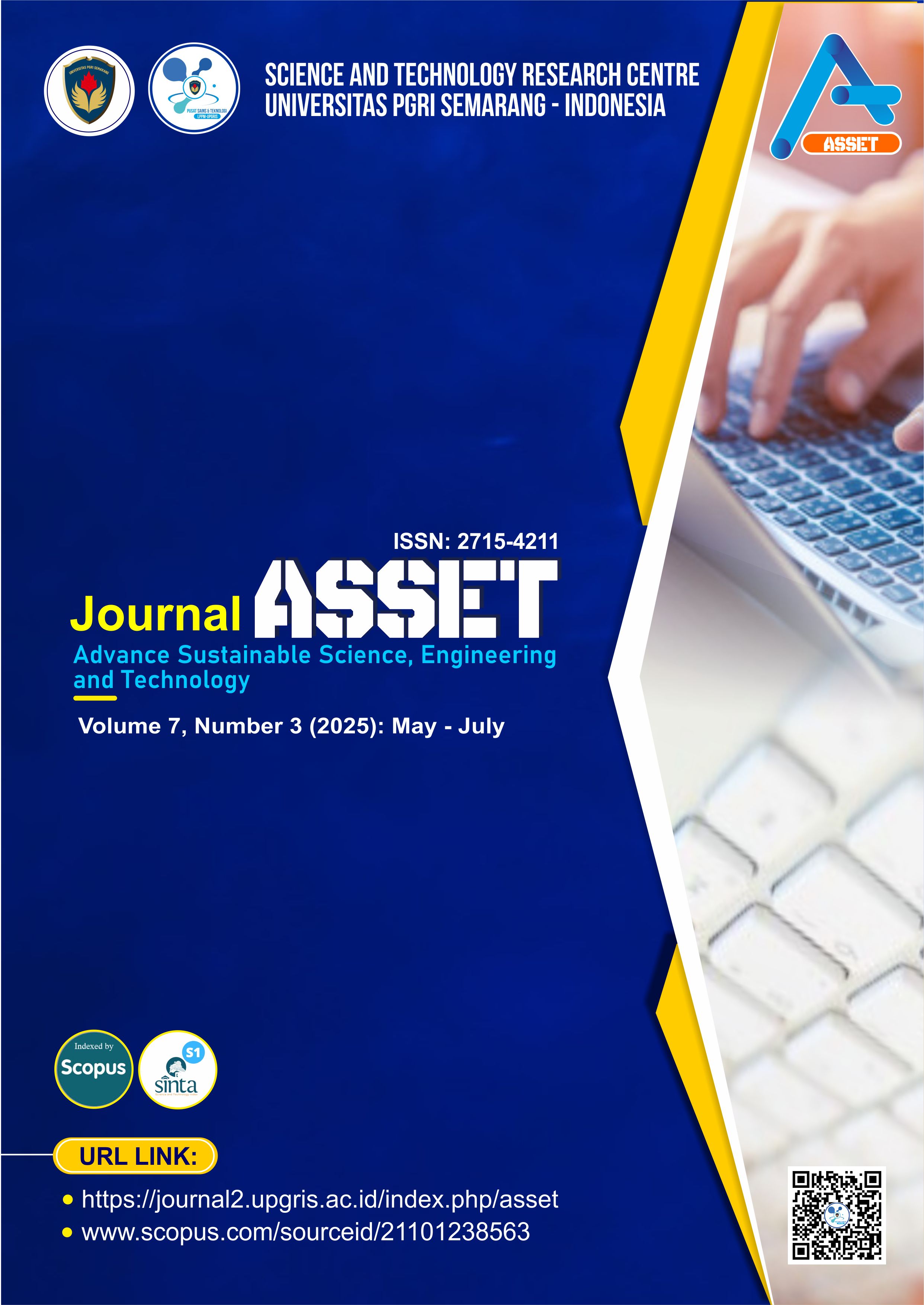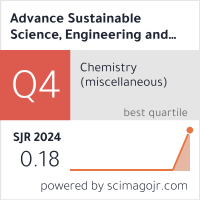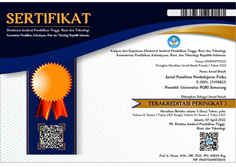Simulation-Based Optimization of Resource Allocation in Seasonal Recreational Facilities Using Discrete Event Simulation and Machine Learning
DOI:
https://doi.org/10.26877/asset.v7i4.2062Keywords:
Discrete Event Simulation, Sustainable Operations, Capacity Planning, Simulation Modeling, Machine Learning, Seasonal Recreational SystemsAbstract
The study proposes a simulation-based optimization framework to surmount recreational facility operational inefficiencies via spatial design, guest flow, and staff allocation. Adopting Discrete Event Simulation (DES) and Machine Learning (ML), the research optimizes capacity planning and resource allocation in the face of dynamic seasonal demands. A year's worth of operations data was utilized for statistical distribution modeling of visitor interarrival times in RStudio, categorized into low, regular, and high seasons. The simulation model, developed in AnyLogic, uncovered service bottlenecks—particularly at ticketing counters and photo points. Validation results indicated close alignment with real-world operational metrics, ensuring model validity. Actionable suggestions are provided in terms of dynamic employee scheduling and spatial reconfiguration for improved efficiency and visitor experience. By integrating DES and ML, the study contributes to sustainable operations and provides a transferable method for the optimization of service systems in weather-dependent recreational environments.
References
[1] Baker C. The prevalence of storyworlds and thematic landscapes in global theme parks. Annals of Tourism Research Empirical Insights, 2023;4. https://doi.org/10.1016/j.annale.2022.100080.
[2] Milman A, Tasci ADA, Wei W. Crowded and popular: The two sides of the coin affecting theme-park experience, satisfaction, and loyalty. Journal of Destination Marketing and Management, 2020;18. https://doi.org/10.1016/j.jdmm.2020.100468.
[3] Bae YH, Moon S, Jun JW, et al. The impact of consumers’ attitudes toward a theme park: A focus on Disneyland in the Los Angeles metropolitan area. Sustainability (Switzerland), 2018;10. https://doi.org/10.3390/su10103409.
[4] Wang JH, Choe Y, Song HJ. Brand behavioral intentions of a theme park in China: An application of brand experience. Sustainability (Switzerland), 2020;12. https://doi.org/10.3390/su12114500.
[5] BPS Bekasi. kota-bekasi-dalam-angka-2024.
[6] Hashim MS, Said I. Effectiveness of Wayfinding Towards Spatial Space and Human Behavior in Theme Park. Procedia Soc Behav Sci, 2013;85:282–95. https://doi.org/10.1016/j.sbspro.2013.08.359.
[7] Ali F, Kim WG, Li J, et al. Make it delightful: Customers’ experience, satisfaction and loyalty in Malaysian theme parks. Journal of Destination Marketing and Management, 2018;7:1–11. https://doi.org/10.1016/j.jdmm.2016.05.003.
[8] Li J, Li Q. Analysis of queue management in theme parks introducing the fast pass system. Heliyon, 2023;9. https://doi.org/10.1016/j.heliyon.2023.e18001.
[9] Shakoor M, Qureshi MR, Jadayil WA, et al. Application of discrete event simulation for performance evaluation in private healthcare: The case of a radiology department. Int J Healthc Manag, 2021;14:1303–10. https://doi.org/10.1080/20479700.2020.1757875.
[10] Nitnara C, Tragangoon K. Simulation-Based Optimization of Injection Molding Process Parameters for Minimizing Warpage by ANN and GA. International Journal of Technology, 2023;14:422–33. https://doi.org/10.14716/ijtech.v14i2.5573.
[11] Shofiudin M, Nur Aini SA, Ihsan MS, et al. Discrete Event Simulation untuk Analisis Pelayanan Bisnis Kuliner (Studi Kasus: Gacoan Merr). JITU: Journal Informatic Technology And Communication, 2024;8:63–72. https://doi.org/10.36596/jitu.v8i1.1048.
[12] Putra Ardiansyah D, Axel Oscar Reynaldi F, Lestari Widaningrum D. ScienceDirect Improving Warehouse Layout Effectiveness and Process Picking Efficiency with the Discrete Event System Simulation Approach. 2023.
[13] Albakkoush S, Pagone E, Salonitis K. An approach to airline MRO operators planning and scheduling during aircraft line maintenance checks using discrete event simulation. Procedia Manuf, 2020;54:160-5. https://doi.org/10.1016/j.promfg.2021.07.024.
[14] Cubukcuoglu C, Nourian P, Sariyildiz IS, et al. A discrete event simulation procedure for validating programs of requirements: The case of hospital space planning. SoftwareX, 2020;12. https://doi.org/10.1016/j.softx.2020.100539.
[15] Lang S, Reggelin T, Müller M, et al. Open-source discrete-event simulation software for applications in production and logistics: An alternative to commercial tools? Procedia Comput Sci, 2021;180:978–87. https://doi.org/10.1016/j.procs.2021.01.349.
[16] Halim E, Perwira Redi AAN, Liman SD. Integrating Time Study and Discrete Event Simulation to Evaluate Manpower Planning. Proceedings - 2023 2nd International Conference on Computational Modelling, Simulation and Optimization, ICCMSO 2023, 2023:153–8. https://doi.org/10.1109/ICCMSO59960.2023.00038.
[17] Ordu M, Demir E, Tofallis C, et al. A comprehensive and integrated hospital decision support system for efficient and effective healthcare services delivery using discrete event simulation. Healthcare Analytics, 2023;4. https://doi.org/10.1016/j.health.2023.100248.
[18] Corrotea H, Portales H, Amigo L, et al. Maintenance Process Analysis in a Port Cargo Company through Discrete Event Simulation. Procedia Comput Sci, 2024;231:415–20. https://doi.org/10.1016/j.procs.2023.12.227.
[19] Saderova J, Rosova A, Behunova A, et al. Case study: the simulation modelling of selected activity in a warehouse operation. Wireless Networks, 2022;28:431–40. https://doi.org/10.1007/s11276-021-02574-6.
[20] Muravev D, Hu H, Rakhmangulov A, et al. Multi-agent optimization of the intermodal terminal main parameters by using AnyLogic simulation platform: Case study on the Ningbo-Zhoushan Port. Int J Inf Manage, 2021;57. https://doi.org/10.1016/j.ijinfomgt.2020.102133.
[21] Watters MJ. Queuing Theory in Theme Parks.
[22] Slack N, Brandon-Jones A. Ninth edition Ninth edition Operations Management Operations.
[23] Kulkarni MH, Bhatwadekar SG, Thakur HM, et al. Impact Factor: 2.114. International Journal of Engineering Sciences, 2015;4.
[24] Du D, Liu T, Guo C. Analysis of Container Terminal Handling System Based on Petri Net and ExtendSim. Promet - Traffic and Transportation, 2023;35:87–105. https://doi.org/10.7307/ptt.v35i1.4196.
[25] Wu S, Xu A, Song W, et al. Structural Optimization of the Production Process in Steel Plants Based on Flexsim Simulation. Steel Res Int, 2019;90. https://doi.org/10.1002/srin.201900201.
[26] Afanasyev M, Pervukhin D, Kotov D, et al. System Modeling in Solving Mineral Complex Logistic Problems with the Anylogic Software Environment. Transportation Research Procedia, 2022;68:483–91. https://doi.org/10.1016/j.trpro.2023.02.065.
[27] Zhang Y, Cassandras CG, Li W, et al. A discrete-event and hybrid traffic simulation model based on SimEvents for intelligent transportation system analysis in Mcity. Discrete Event Dynamic Systems: Theory and Applications, 2019;29:265–95. https://doi.org/10.1007/s10626-019-00286-w.
[28] Wiggin A, Latif M, Kundu S. A STUDY OF CONTINUOUS MODELLING USING SIMULATION SOFTWARE FOR BUSINESS PROCESSES. Journal of Innovative Science & Technology Review Issue, 2020;1:1–10.
[29] Santos R, Pires A, Pereira W, et al. Computer simulation in the analysis of computed tomography exam times. IFMBE Proc, 2019;68:661–4. https://doi.org/10.1007/978-981-10-9035-6_123.
[30] Dagkakis G, Papagiannopoulos I, Heavey C. ManPy: an open-source software tool for building discrete event simulation models of manufacturing systems. Softw Pract Exp, 2016;46:955–81. https://doi.org/10.1002/spe.2347.
[31] Zhang L, Li M, Wang Y. Research on Design Optimization of Subway Station Transfer Entrance Based on AnyLogic. Procedia Comput Sci, 2022;208:310–8. https://doi.org/10.1016/j.procs.2022.10.044.
[32] Stupin A, Kazakovtsev L, Stupina A. Control of traffic congestion by improving the rings and optimizing the phase lengths of traffic lights with the help of anylogic. Transportation Research Procedia, 2022;63:1104–13. https://doi.org/10.1016/j.trpro.2022.06.113.
[33] Noorsaman A, Amrializzia D, Zulfikri H, et al. Machine Learning Algorithms for Failure Prediction Model and Operational Reliability of Onshore Gas Transmission Pipelines. International Journal of Technology, 2023;14:680–9. https://doi.org/10.14716/ijtech.v14i3.6287.
[34] Alzubaidi L, Zhang J, Humaidi AJ, et al. Review of deep learning: concepts, CNN architectures, challenges, applications, future directions. J Big Data, 2021;8. https://doi.org/10.1186/s40537-021-00444-8.
[35] El-Hadad R, Tan YF, Tan WN. Anomaly Prediction in Electricity Consumption Using a Combination of Machine Learning Techniques. International Journal of Technology, 2022;13:1317–25. https://doi.org/10.14716/ijtech.v13i6.5931.
[36] Neurohr B, Koopmann T, Mohlmann E, et al. Determining the Validity of Simulation Models for the Verification of Automated Driving Systems. IEEE Access, 2023;11:102949–60. https://doi.org/10.1109/ACCESS.2023.3316354.
[37] Inventory (I(t)).
[38] Siripath N, Suranuntchai S, Sucharitpwatskul S. Modeling Dynamic Recrystallization Kinetics in BS 080M46 Medium Carbon Steel: Experimental Verification and Finite Element Simulation. International Journal of Technology, 2024;15:1292–307. https://doi.org/10.14716/ijtech.v15i5.6770.
[39] Harari Y, Riemer R, Bechar A. Factors determining workers’ pace while conducting continuous sequential lifting, carrying, and lowering tasks. Appl Ergon, 2018;67:61–70. https://doi.org/10.1016/j.apergo.2017.09.003.
[40] Zulfiqar FL, Prasetia T, Ulupui GKA. Tax Incentives and Social Spending Amidst COVID-19: A VECM Analysis in a Subnational Government (case of Jakarta province, Indonesia). Journal of Tax Reform, 2025;11:243–60. https://doi.org/10.15826/jtr.2025.11.1.200.
[41] Baum T, Cheung C, Kong H, et al. Sustainability and the tourism and hospitality workforce: A thematic analysis. Sustainability (Switzerland), 2016;8. https://doi.org/10.3390/su8080809.
[42] Lee J, Bagheri B, Kao HA. A cyber-physical systems architecture for industrial operations with predictive maintenance. Computers in Industry, 2022;135:103569. https://doi.org/10.1016/j.compind.2022.103569.
[43] Zhou Y, Fan W. A hybrid simulation-optimization model for sustainable capacity planning in service systems. Sustainable Production and Consumption, 2023;35:281–92. https://doi.org/10.1016/j.spc.2023.01.013.
[44] Nguyen TT, Bui TD, Lim MK. Simulation-based resource optimization for service facilities under demand uncertainty. Journal of Cleaner Production, 2021;319:128690. https://doi.org/10.1016/j.jclepro.2021.128690.
[45] Park CS, Kim HJ. Enhancing customer flow through AI-based layout optimization in theme-based facilities. Journal of Building Engineering, 2023;67:106053. https://doi.org/10.1016/j.jobe.2023.106053.
[46] Sarkar B, Sanyal S. Operations research applications for sustainable facility layout problems: A review. Omega, 2022;109:102575. https://doi.org/10.1016/j.omega.2022.102575.
[47] Almeida A, Pereira T, Ferreira A. Data-driven workforce planning for service systems using simulation and optimization. Simulation Modelling Practice and Theory, 2021;107:102179. https://doi.org/10.1016/j.simpat.2020.102179.
[48] Rahman MA, Yu V. Leveraging simulation and machine learning for sustainable operations management. Journal of Industrial and Production Engineering, 2022;39(5):291–304. https://doi.org/10.1080/21681015.2022.2054604.
[49] Wang R, Hu X. A sustainable approach to managing visitor flow in recreational facilities using discrete-event simulation. Journal of Sustainable Tourism, 2024;32(1):112–29. https://doi.org/10.1080/09669582.2023.2231876.
[50] Ordu M, Demir E, Tofallis C, et al. A comprehensive and integrated hospital decision support system for efficient and effective healthcare services delivery using discrete event simulation. Healthcare Analytics, 2023;4:100248. https://doi.org/10.1016/j.health.2023.100248.
[51] Corrotea H, Portales H, Amigo L, et al. Maintenance process analysis in a port cargo company through discrete event simulation. Procedia Computer Science, 2024;231:415–20. https://doi.org/10.1016/j.procs.2023.12.227.
[52] Saderova J, Rosova A, Behunova A, et al. Case study: The simulation modelling of selected activity in a warehouse operation. Wireless Networks, 2022;28:431–40. https://doi.org/10.1007/s11276-021-02574-6.
[53] Muravev D, Hu H, Rakhmangulov A, et al. Multi-agent optimization of the intermodal terminal main parameters using AnyLogic simulation: A case study on the Ningbo-Zhoushan Port. International Journal of Information Management, 2021;57:102133. https://doi.org/10.1016/j.ijinfomgt.2020.102133.
[54] Alzubaidi L, Zhang J, Humaidi AJ, et al. Review of deep learning: Concepts, CNN architectures, challenges, applications, future directions. Journal of Big Data, 2021;8:53. https://doi.org/10.1186/s40537-021-00444-8.
[55] El-Hadad R, Tan YF, Tan WN. Anomaly prediction in electricity consumption using a combination of machine learning techniques. International Journal of Technology, 2022;13(6):1317–25. https://doi.org/10.14716/ijtech.v13i6.5931.
[56] Zhang L, Li M, Wang Y. Research on design optimization of subway station transfer entrance based on AnyLogic. Procedia Computer Science, 2022;208:310–8. https://doi.org/10.1016/j.procs.2022.10.044.
[57] Stupin A, Kazakovtsev L, Stupina A. Control of traffic congestion by improving rings and optimizing the phase lengths of traffic lights using AnyLogic. Transportation Research Procedia, 2022;63:1104–13. https://doi.org/10.1016/j.trpro.2022.06.113.
[58] Noorsaman A, Amrializzia D, Zulfikri H, et al. Machine learning algorithms for failure prediction model and operational reliability of onshore gas transmission pipelines. International Journal of Technology, 2023;14(3):680–9. https://doi.org/10.14716/ijtech.v14i3.6287.
[59] Neurohr B, Koopmann T, Mohlmann E, et al. Determining the validity of simulation models for the verification of automated driving systems. IEEE Access, 2023;11:102949–60. https://doi.org/10.1109/ACCESS.2023.3316354.
[60] Santos R, Pires A, Pereira W, et al. Computer simulation in the analysis of computed tomography exam times. IFMBE Proceedings, 2019;68:661–4. https://doi.org/10.1007/978-981-10-9035-6_123.
[61] Zhang Y, Cassandras CG, Li W, et al. A discrete-event and hybrid traffic simulation model based on SimEvents for intelligent transportation system analysis in Mcity. Discrete Event Dynamic Systems: Theory and Applications, 2019;29:265–95. https://doi.org/10.1007/s10626-019-00286-w.











